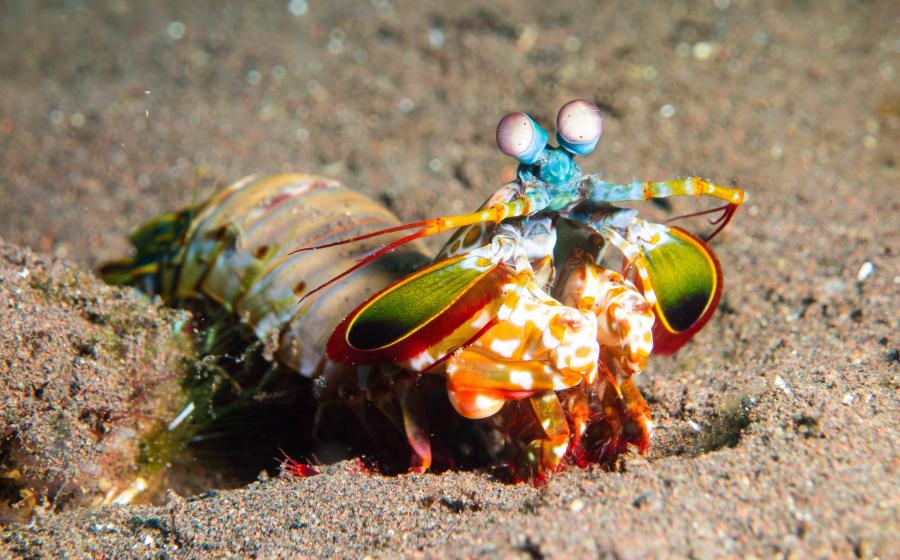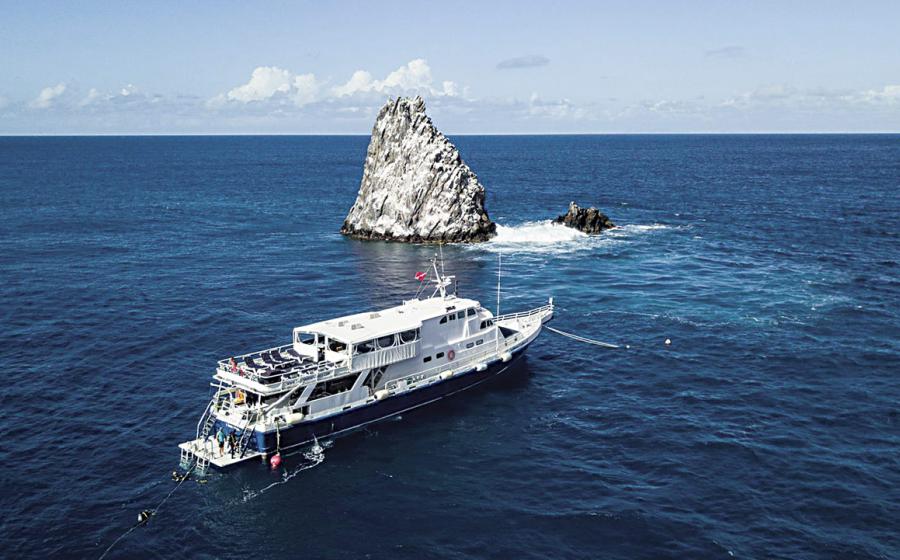Dive Provo Dive Sites
Text courtesy of of Dive Provo's Clare and Alan Jardine. For additional dive sites in the western Turks and Caicos, click over to http://www.diveprovo.com/divesites.html 1) Football Field -- The Football Field divesite is a good example of the ocean floor topography in the Pine Cay area of Providenciales, where the mooring pin is in 50 feet seawater (fsw) at the top of a steeply sloping wall. Divers can expect this area to be teeming with schools of juvenile barracudas, jacks, Bermuda chub, and groupers. Swimming away from the wall brings the diver to a large area of sand in 70 feet of water, home to many lobsters. 2) Grouper Hole -- The mooring is by a deep sandy grotto, the Grouper Hole, with a large coral head in the middle of a sand chute that leads divers to a gently sloping wall. In the days before the formation of the marine park in Provo this was a spot that grouper feeding took place. 3) Aquarium -- Enormous schools of grunts and snappers form an almost continuous school on top of the wall at the Aquarium. The wall is an exaggerated spur and groove type formation with some spectacular sand chutes that run on down through the reef to a depth of around 100 fsw. 4) Amphitheatre -- There are large pillar coral under the boat and an abundance of horse-eyed jacks. The wall drops vertically to an amphitheater formation that is undercut 10-15 feet to a sandy bottom in 85 fsw. Two prominent features of this site is a large elephant ear sponge with black coral along the top lip of the undercut, and some rare orange rope sponges at about 90 fsw. In front of the amphitheater is a buttress with some beautiful examples of plate corals. 5) The Crack -- This site's name comes from the deep crevice that cuts down the wall from a depth of 50 to about 100 fsw. Large grouper and snapper tend to hang out in the crack among black coral and deep-water gorgonian. There is always a good chance to spot sharks and spotted eagle rays at this site. 6) Hole In the Wall -- This is a crack or hole that drops vertically from 55 fsw and emerges from the face of the wall at 95 fsw. Space is limited to one diver in the hole at a time, but the experience is well worth it; the sensation of emerging into the blue water is an incredible one. Extensive sheet coral formations are also found here. 7) The Gulley -- The wall begins in about 50 fsw and the top lip of the wall is a dense coral reef with many cleaning stations. The gulley gets its name from the cut in the reef that forms two distinct sections before dropping off vertically. The vertical wall here has many undercuts covered in sponges and black corals. 8) Whiteface (Spanish Anchor) -- The name of this dive site has nothing to do with the underwater topography, but comes from the steep white cliffs along the shoreline. Along the top of the wall is particularly profuse reef with some impressive stands of pillar coral. The fish population includes barracuda, parrot fish French angelfish and Nassau grouper. Just north of the mooring is a crack in the wall with a large anchor embedded at 70 feet. The wall is well undercut to a depth of about 100 fsw. 9) Double D -- Located just offshore from the bird sanctuary on deserted French Cay, Double D's name comes from two large pinnacles rising from the ocean floor. The wall here is a fairly gradual slope with a profuse carpet of corals along its entire length. The area around the Double D pinnacles and the boat mooring is home to large numbers of jack, black durgon, and grouper. 10) West Sand Spit -- About 27 miles southeast of Provo the West Sand Spit is an area of sand in the open ocean which has about 50 feet of sand exposed and dry at low tide. The wall starts in 60 fsw and drops to about 150 fsw. Large schools of goatfish call this area home, as well as many other species. The REEF Survey completed in 1996 identified more than 120 different types of fish at this site, including three Jewfish. The sand area is also home to four five-foot-plus stingrays. During the year, seasonal visitors to the Sand Spit include Sargassum Triggers, Ocean Triggers, and a variety of pelagics. Frequent currents combined with its remote location make this a healthy vibrant reef. For more information about Provo diving, click on the home page below. For Tourist Board information....






